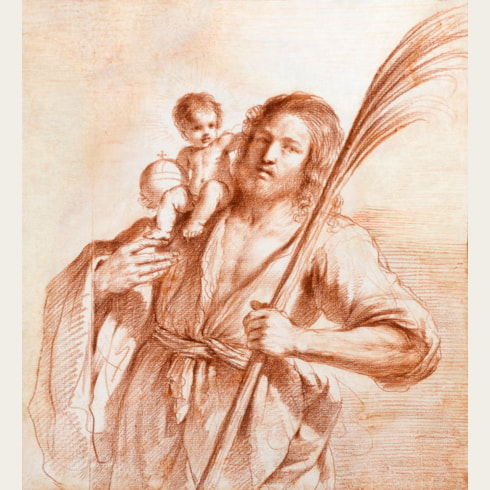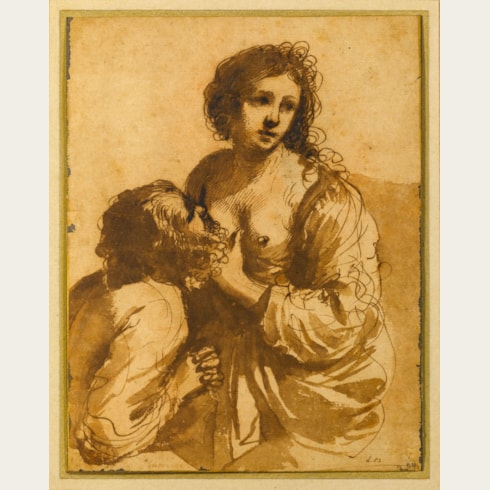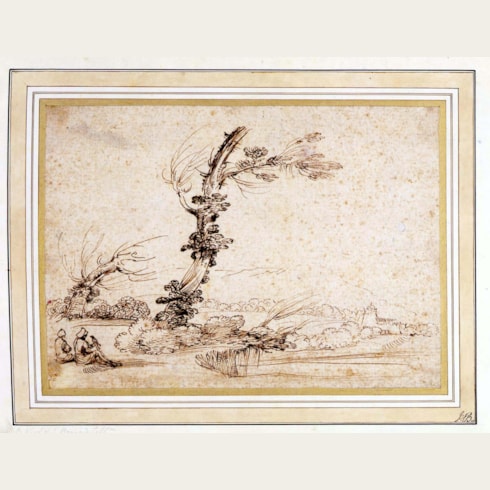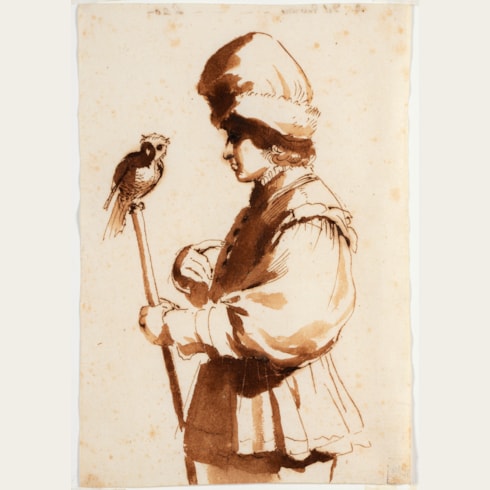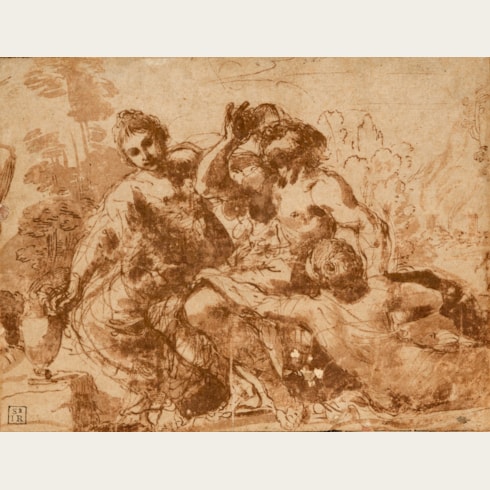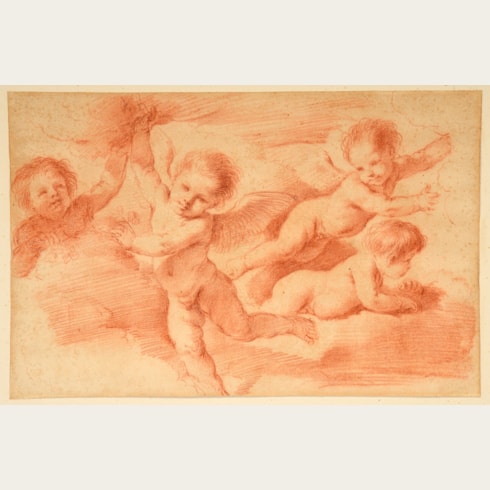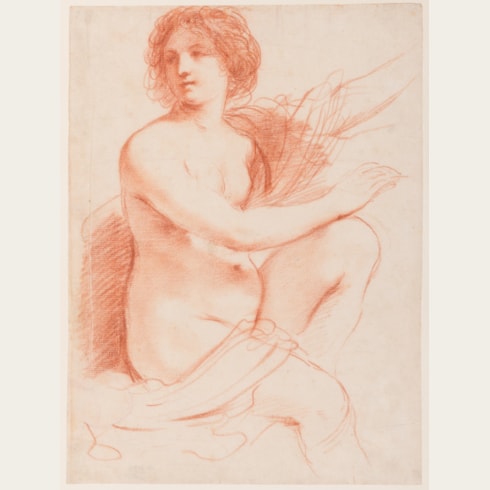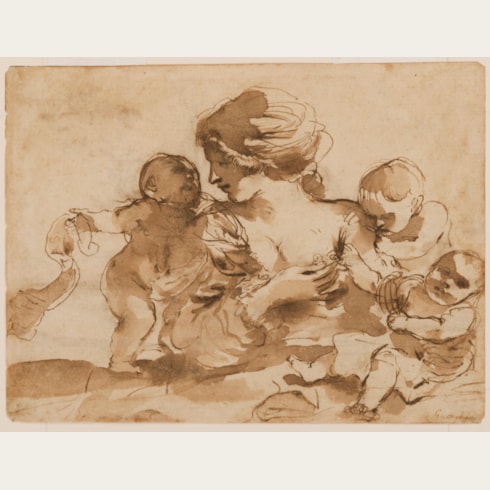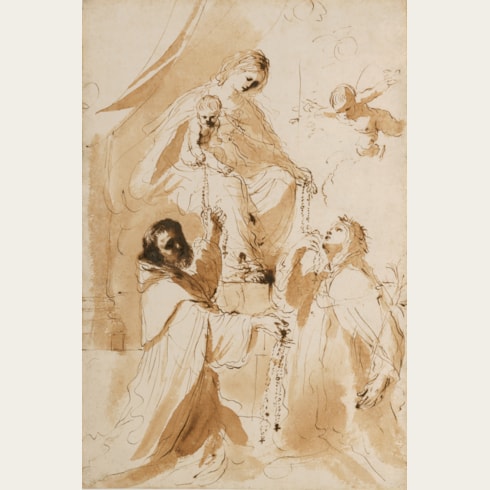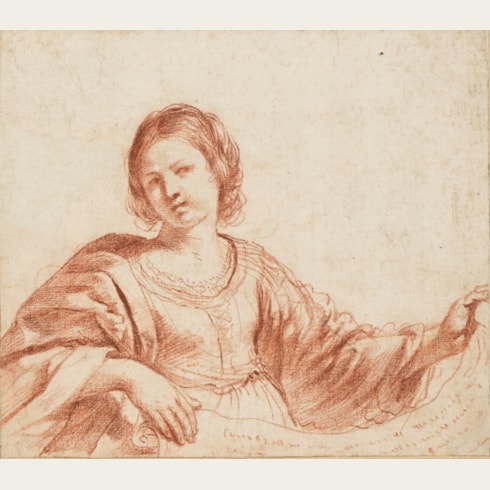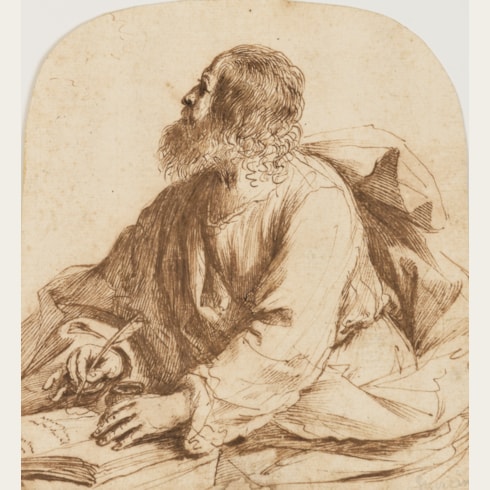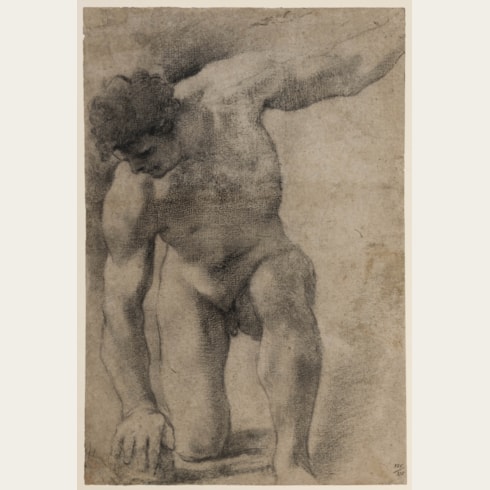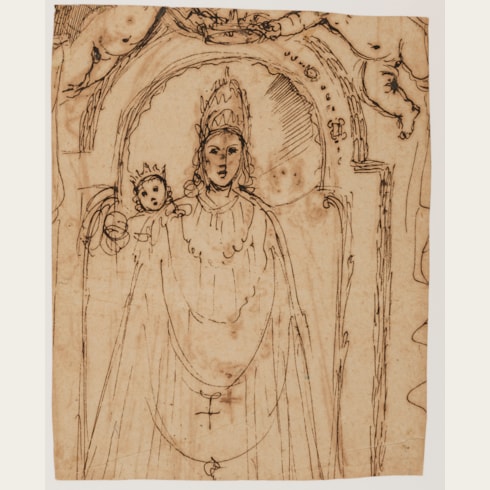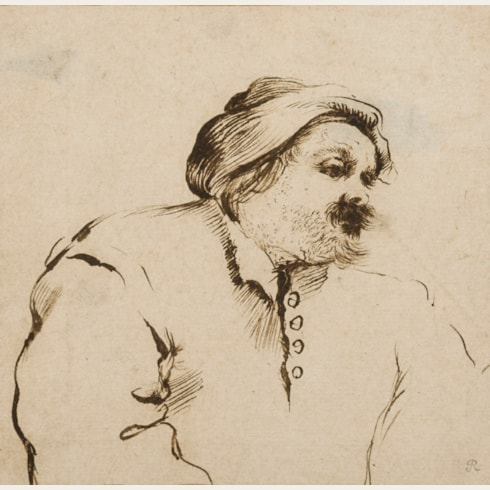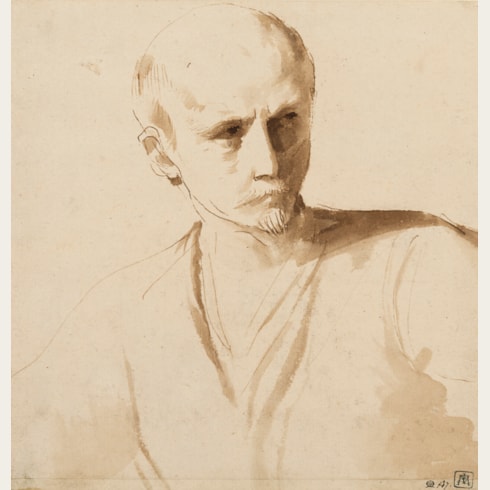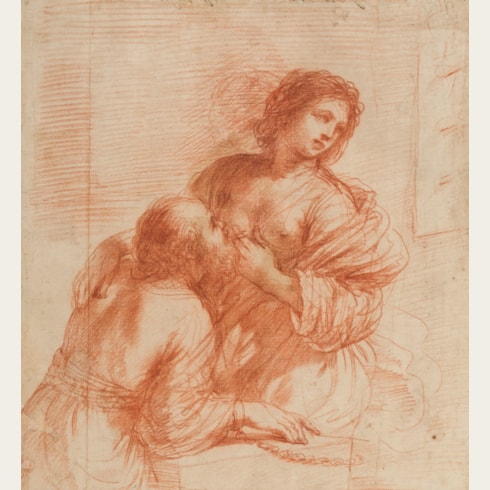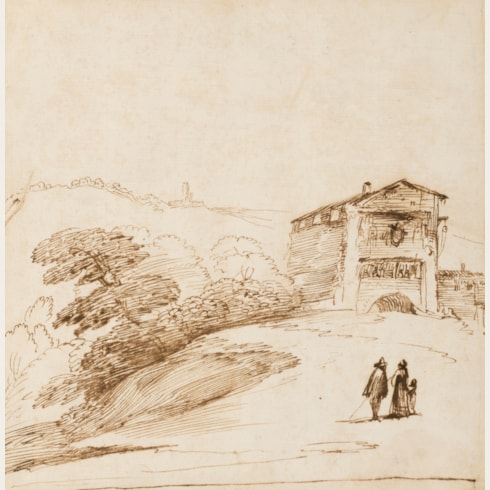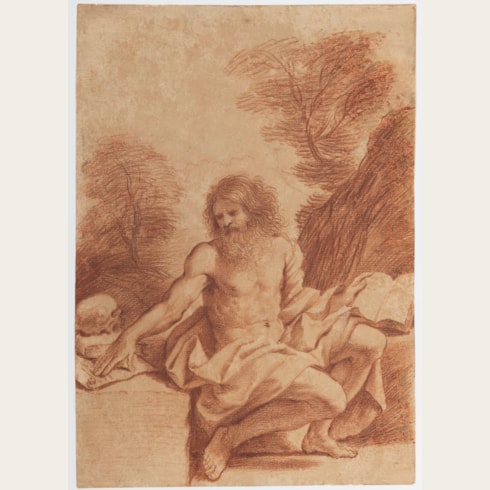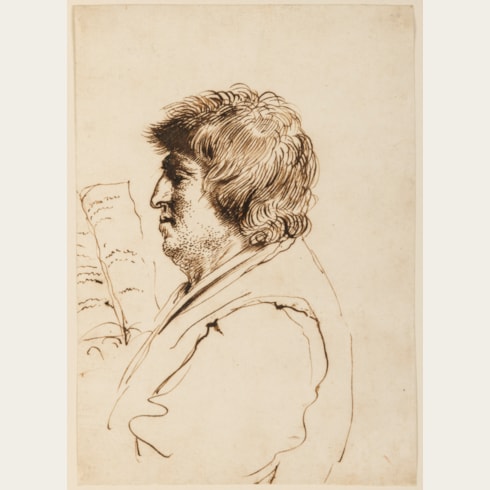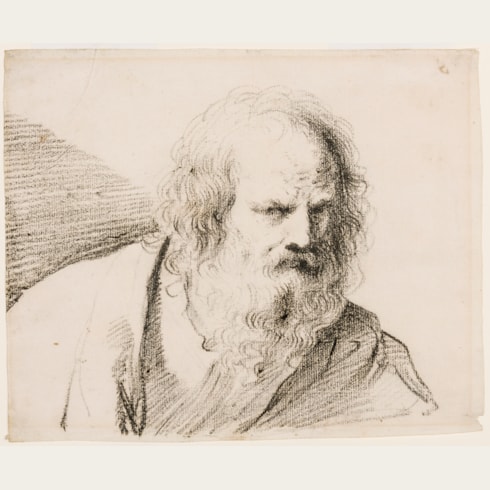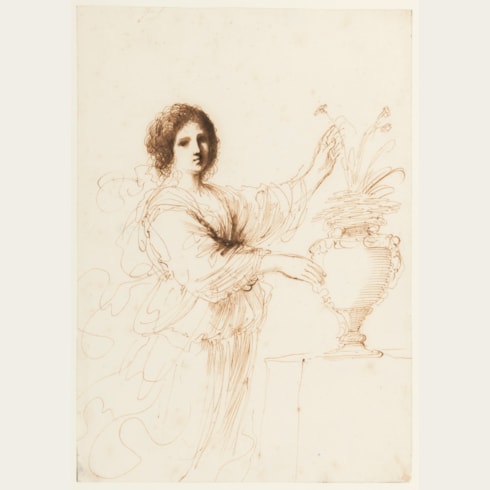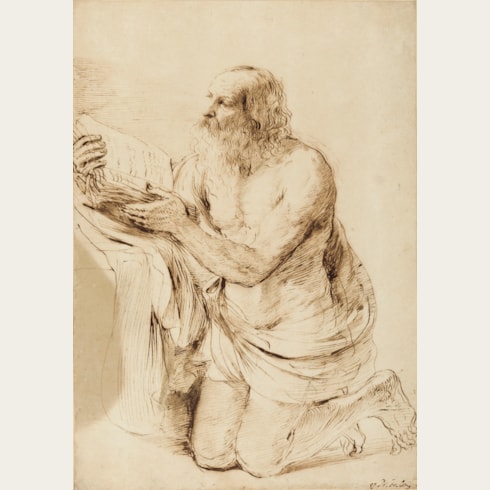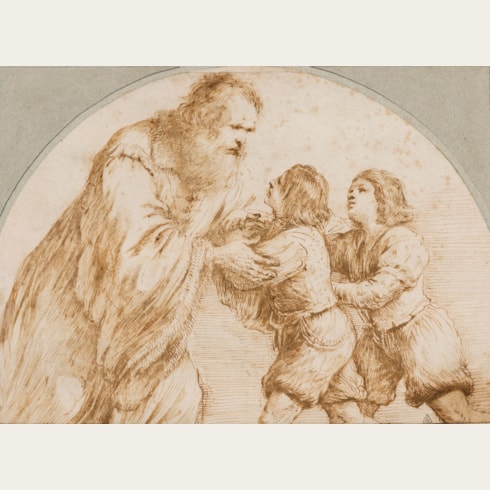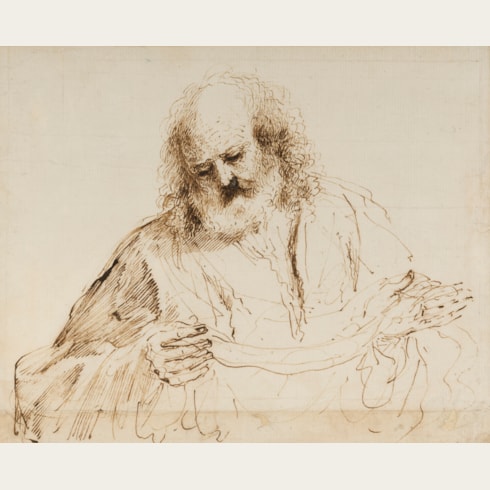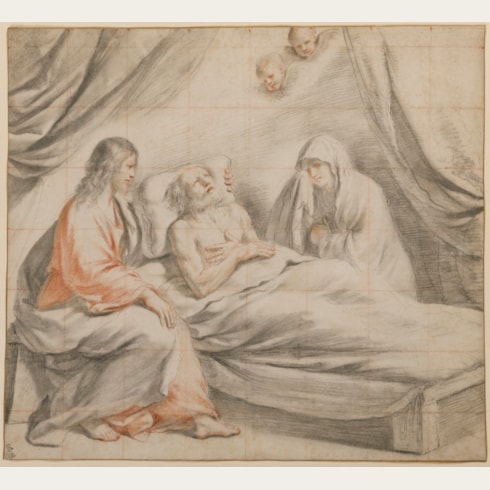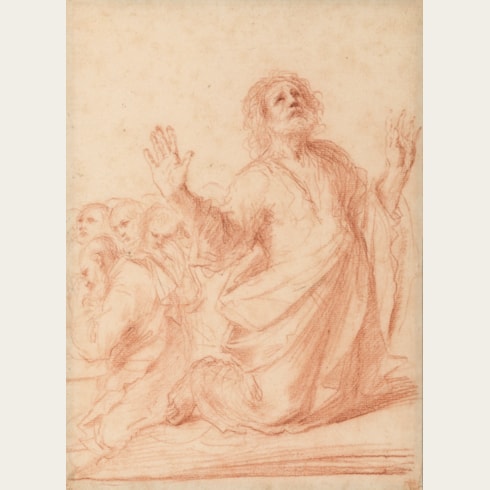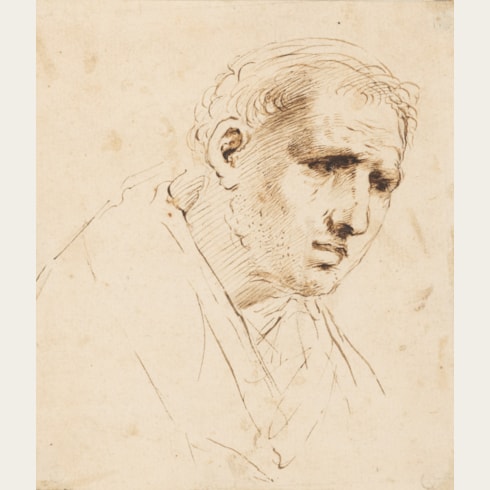Giovanni Francesco Barbieri GUERCINO
(Cento 1591 - Bologna 1666)
Andromeda
A large made up area at the lower left corner.
Inscribed Jph / 78751 and Guercino on the backing sheet.
Inscribed A mon cher ami Emmanuel des Collections Henry Scipio Reitlinger / et Dennis J. Ward, 1954 on the reverse of the old backing sheet.
297 x 208 mm. (11 3/4 x 8 1/8 in.)
This is a preparatory figure study for Guercino’s large painting of Perseus and Andromeda of 1648, which was until recently in the Palazzo Balbi Senàrega in Genoa. The painting was commissioned from Guercino by his friend, the Bolognese collector Commendatore Giovanni Battista Manzini (1599-1664); one of several works by the artist in his collection. Somewhat unusually, Guercino’s account book, the libro de’ conti, records that the painting seems to have been paid for by Manzini, on the 24th of September 1648, not with money but with various goods.
Although this finished study for the figure of the captive Andromeda – a rare example in Guercino’s drawn oeuvre of a female nude in red chalk – differs from the final painting in several ways, such as the position of the arms, the two share several significant features, notably the position of the legs and the drapery. In the present sheet, pentimenti are visible in the figure’s left shoulder and the fingers of her outstretched left hand.
Four other drawings by Guercino have been proposed as preparatory studies for the 1648 painting. An earlier stage in the development of the composition is found in a pen and ink drawing of the figure of Andromeda, in which she is chained at the left wrist rather than the ankle, in the collection of the Blanton Museum of Art at the University of Texas in Austin. A now-lost pen and ink drawing of Andromeda - horizontal in orientation, with the figure at the left and the sea monster at the lower right, as it appears in the final painting - was at one time in the collection of Pierre-Jean Mariette and was last recorded at auction in Paris in 1926.
The present sheet is characteristic of Guercino’s draughtsmanship in red chalk in the late 1640’s and 1650’s, and accords well with such drawings of this period as a drawing of Erminia of c.1648, formerly in the Ratjen collection and today in the National Gallery of Art in Washington, D.C.. Also comparable are two red chalk drawings of the same period; a study of The Apostles at the Tomb and a drawing of Diana Burning the Instruments of Love, both in private American collections.
Giovanni Francesco Barbieri, known as Il Guercino (‘the squinter’) because he was cross-eyed, was by the second decade of the 17th century one of the leading painters in the province of Emilia. Born in Cento, a small town between Bologna and Ferrara, Guercino was largely self-taught, although his early work was strongly influenced by the paintings of Ludovico Carracci. In 1617 he was summoned to Bologna by Alessandro Ludovisi, the Cardinal Archbishop of Bologna, and there painted a number of important altarpieces, typified by the Saint William Receiving the Monastic Habit, painted in 1620 and now in the Pinacoteca Nazionale in Bologna. When Ludovisi was elected Pope Gregory XV in 1621, Guercino was summoned to Rome to work for the pontiff and his nephew, Cardinal Ludovico Ludovisi. It was in Rome that Guercino painted some of his most celebrated works, notably the ceiling fresco of Aurora in the Casino Ludovisi and the large altarpiece of The Burial and Reception into Heaven of Saint Petronilla for an altar in Saint Peter’s. The papacy of Gregory XV was short-lived, however, and on the death of the Pope in 1623 Guercino returned to his native Cento. He remained working in Cento for twenty years, though he continued to receive commissions from patrons throughout Italy and beyond, and turned down offers of employment at the royal courts in London and Paris. Following the death of Guido Reni in 1642, Guercino moved his studio to Bologna, where he received commissions for religious pictures of the sort that Reni had specialized in, and soon inherited his position as the leading painter in the city.
Guercino was among the most prolific draughtsmen of the 17th century in Italy, and his preferred medium was pen and brown ink, although he also worked in red chalk, black chalk, and charcoal. He appears to have assiduously kept his drawings throughout his long career, and to have only parted with a few of them. Indeed, more drawings by him survive today than by any other Italian artist of the period. On his death in 1666 all of the numerous surviving sheets in his studio passed to his nephews and heirs, the painters Benedetto and Cesare Gennari, known as the ‘Casa Gennari’.
The drawings of Guercino, which include figural and compositional studies, landscapes, caricatures and genre scenes, have always been coveted by later collectors and connoisseurs. Indeed, the 18th century amateur Pierre-Jean Mariette noted of the artist that ‘Ce peintre a outre cela une plume tout-à-faite séduisante’. The largest extant group of drawings by Guercino is today in the Royal Collection at Windsor Castle; these were acquired from the Gennari family by King George III’s librarian, Richard Dalton, between about 1758 and 1764.
Provenance
Literature





